
VR Art Exhibition
Unleashed Utopias Exhibition Catalogue
VR ART PRIZE 2023 Virtual Utopias
The theme for the VR ART PRIZE 2023 was ‘Virtual Utopias’
The rapid advancement of digitalisation is expanding the way we explore art by creating new virtual spaces in which artistic works can be experienced digitally, alongside analogue ones. With virtual reality technology, artists can imagine alternative utopian scenarios in a virtual space. Different societal realities are reflected and made tangible. This opens up new realms of possibility, offering moments of escape from everyday worries and constraints.
Crises such as climate breakdown, pandemics and wars instil fear, but artistic ideas can offer a way into the future. They carry the potential for change, and draw speculative alternatives to the "here and now". How can our world be made more sustainable, socially just, and peaceful? How can technology help to create a better society? And how does the way we experience art, communicate, and coexist change as we increasingly move within the digital space?
Through the increased use of VR technologies and our departure into the metaverse – the digital extension of our physical reality –, virtual worlds become part of our present. How will the imagined utopias of virtual reality interconnect with physical actuality?
The VR ART PRIZE 2023 is aimed at artists who use virtual reality and spatial installations to create visions for social change.
Read more about the nominees for VR ART PRIZE 2023.
Read more about the exhibition 'Unleashed Utopias'.
About VR ART PRIZE
The VR ART PRIZE awarded by Deutsche Kreditbank (DKB), in cooperation with the Contemporary Arts Alliance (CAA) Berlin, is the first art prize for virtual reality in the field of visual arts with an institutional exhibition in Germany.
The VR ART PRIZE focuses on the artistic potential of new technologies, as well as the exploration and critical analysis of their impact on the individual and society. The prize aims to contribute to the structural establishment of this emerging medium in visual art.
In cooperation with the CAA Berlin, DKB awards 5 working grants to visual artists who work with virtual reality in 2023: each grant is for a period of 4 months and worth EUR 1,000 per month. In September and October 2023 the works of the winning artists are shown at an exhibition at Haus am Lützowplatz (HaL) Berlin. 3 VR ART PRIZES have been granted, with a total endowment of EUR 12,000.
Artistic director Tina Sauerlaender
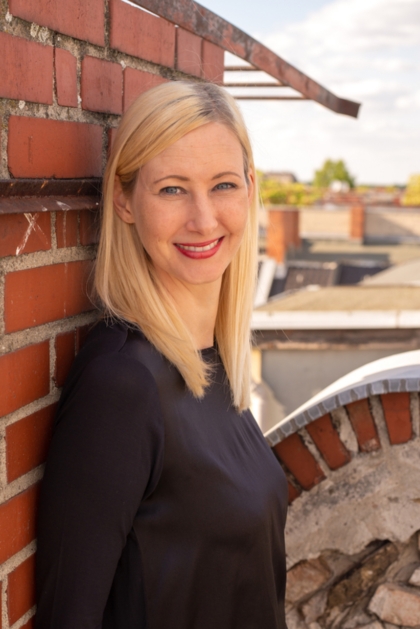
Tina Sauerlaender is artistic director of the VR ART PRIZE by DKB in cooperation with CAA Berlin. She was also artistic director for the 1st edition of VR ART PRIZE and curated the exhibition "Resonant Realities" at Haus am Lützowplatz, Berlin.
Tina Sauerlaender is an art historian, curator and writer who focuses on the impact of the digital and the internet on individual environments and society as well as on virtual reality in visual arts. She is co-founder and director of the independent exhibition platform peer to space and has been organizing and curating international group exhibitions since 2010, like The Unframed World. Virtual Reality as Artistic Medium for the 21st Century (House of Electronic Arts Basel, 2017). Together with curator Erandy Vergara she developed the exhibition series Critical Approaches in Virtual Reality Art and realized projects like Envisioning the Future. Other World Perspectives in Virtual Reality Art (Halcyon Arts Lab, Washington, DC, 2018) or Speculative Cultures. A Virtual Reality Art Exhibition (Kellen Gallery, Parsons/The New School, New York, 2019).
Tina Sauerlaender, photo by J. Pegman, 2020
Members Prize Jury
On the evening of September 15th 2023, the three winners of the VR ART PRIZE have been announced at an award ceremony.
The jury consisted of:
- Yolanda Kaddu-Mulindwa, Director of the municipal galleries Neukölln
- Nora O Murchú, Artistic Director, transmediale
- PD Dr. Ursula Ströbele, Head of Study Center for Modern and Contemporary Art, Zentralinstitut für Kunstgeschichte, Munich
- Jan Walther, Member of the Management Board, Deutsche Kreditbank AG, Berlin
- Dr. Marc Wellmann, pausing Artistic Director, Haus am Lützowplatz
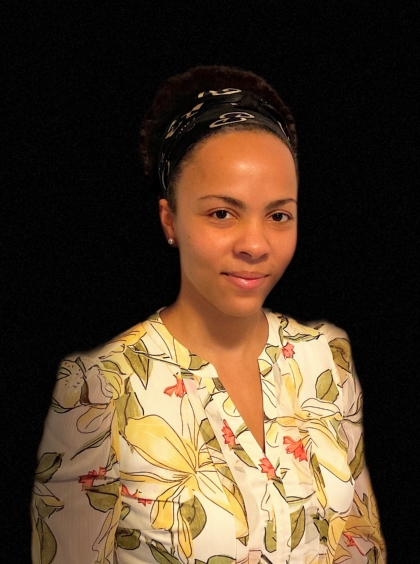
Yolanda Kaddu-Mulindwa
"The VR ART PRIZE is relevant because it combines traditional art with modern technology and provides a platform for artists to share their work with a wide audience. By using virtual reality, artists can present their work in a completely new way, pushing the boundaries of traditional art forms and immersing viewers in fascinating worlds."
Yolanda Kaddu-Mulindwa is the director of the municipal galleries Neukölln, the division of Visual Arts and Art in Urban Space of the district of Neukölln. She studied art and cultural history at the University of Augsburg and completed her master's degree in art and visual history at Humboldt University in Berlin. She was a curatorial assistant for the Festival of Future Nows 2014 at Neue Nationalgalerie Berlin and in 2017 at Hamburger Bahnhof - Nationalgalerie der Gegenwart and worked for Light Art Space (LAS) in 2018. From 2017 to 2019 she worked for the art book publisher Frölich & Kaufmann. As a freelance curator, in 2021 she conceived and organised two art festivals as part of the DRAUSSENSTADT initiative.
© Portrait Yolanda Kaddu-Mulindwa by Guillermo Mayer
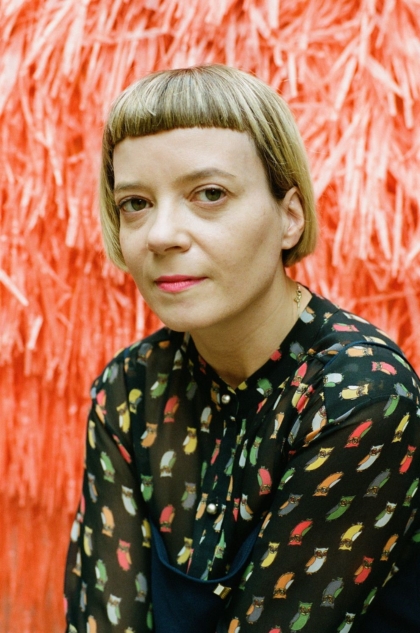
NoraO Murchú
“VR is an immersive technology with the capacity for world building and the creation of minute details, histories, cultures, and settings.
The VR ART PRIZE opens up a space for audiences and artists to enter into conversation in and about these worlds and the questions they critically raise.”
Nora O Murchú is an Irish curator & researcher. In their curatorial work they explore online culture and the implications of technological developments. Her multidisciplinary practice embraces narratives, and fictions and results in objects, exhibitions, and interventions, and they have curated exhibitions and events for institutions including Akademie Schloss Solitude, LABoral Centro de Arte y Creación Industrial, Rua Red, and The Science Gallery. She has held positions as a research associate for the Interaction Design Centre at the University of Limerick, the Interaction Research Studio at Goldsmiths, and CRUMB at the University of Sunderland and their research on the impact of technology on curating has been published at Goldsmiths Press, Taylor & Francis and Springer. She currently serves as a lecturer in the Department of Computer Science and Information Systems at the University of Limerick in Ireland, and is the Artistic Director of transmediale in Berlin.
© Portrait Nora O Murchú by Christian Werner
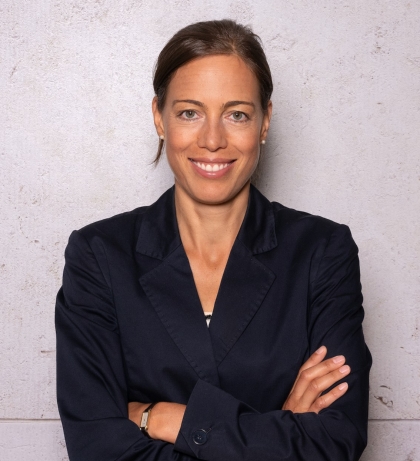
UrsulaStröbele
"What interests me about VR art is how artist create new visual worlds that extend the sculptural as the most material of all forms of art into the digital, how eco-fictional scenarios are designed in the face of threats to nature, and how our senses deal with these altered modes of perception."
Ursula Ströbele is a research associate at the Central Institute for Art History in Munich, where she heads the Study Center for Modern and Contemporary Art. In 2021/22 she held a substitute professorship at the HBK, Braunschweig. In 2019 she was curatorial director of the Kunstverein Arnsberg. In 2021/22 she curated with Tina Sauerlaender the AR exhibition Augmented Species. Invasive Sculptures in Hybrid Ecologies, 2019/20 Hans Haacke. Art Nature Politics (ZI Munich, Städtisches Museum Abteiberg, Mönchengladbach). 2012-2018 she was a research associate at the Berlin University of the Arts, where she co-founded the Scientific Network Theory of Sculpture. In 2010, she completed her PhD at Heinrich Heine University in Düsseldorf on the sculptural reception pieces of the Royal Academy in Paris (1700-1730). In 2020, she was awarded her doctorate with the thesis Extension of the Sculptural. Analyses and Theories of Current Border Phenomena: Non-Human Living Sculptures since the 1960s. Hans Haacke and Pierre Huyghe habilitation. Her current research interests include digital, time-based phenomena of the sculptural, art and (queer) ecologies, que(e)rse history of 20th century sculpture, infrastructures of modernity, ephemeral media images.
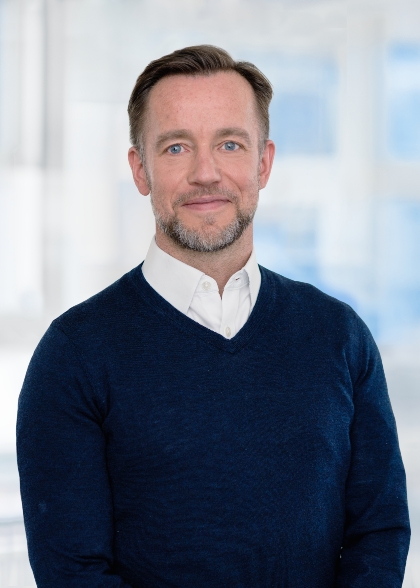
Jan Walther
"Virtual Reality represents a revolutionary step in the evolution of art, pushing the boundaries of the imaginable and transporting the viewer into a world where reality is redefined. It opens up a unique opportunity for us to both expand artistic expression and experience new forms of sensation and interaction."
Jan Walther has been a member of the Board of Management of Deutsche Kreditbank AG (DKB) since April 2018 and is responsible for Finance, Compliance & Support and Business Intelligence. He is also responsible for the development and management of product processes as well as regulatory issues.
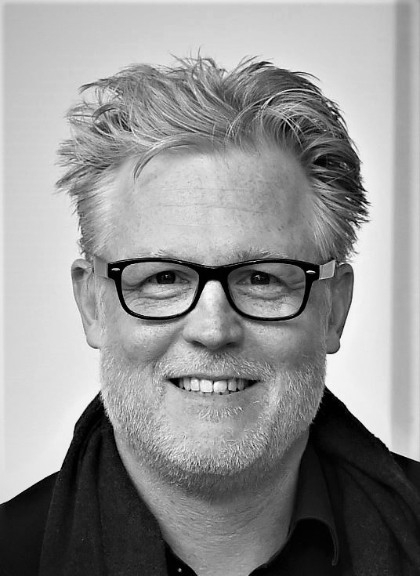
MarcWellmann
"In my opinion, VR art has enormous aesthetic potential that has not yet been fully exploited. The VR ART PRIZE by DKB in Cooperation with CAA Berlin renders it possible to experience these in a concentrated form, as the medium itself is put to the test. It is particularly exciting to be part of this, as the technology is still comparatively new and is developing rapidly. As a result, the artistic spectrum expands in the same way."
Marc Wellmann (*1968 in Hamburg) grew up in Berlin, studied art history and North American studies at the Free University of Berlin. 2005 PhD at the UdK on blurry phenomena in optics, painting and art theory from the 15th to the 19th century. Since 1996 researcher and from 2005 to 2015 member of the board of directors of Bernhard Heiliger Foundation. Between 2005 and 2007 Head of Artists Liaison at the Volker Diehl gallery and freelance curator with exhibition projects in New York and Moscow among others. 2008 to 2012 director of exhibitions at the Georg Kolbe Museum, Berlin. Since 2013 artistic director of Haus am Lützowplatz (HaL), Berlin's oldest art association.
© Portrait Marc Wellmann by Ralf Meier
ABOUT VR ART
Virtual reality is still young as an artistic medium, yet it is developing very quickly thanks to a generation of artists who are eager to experiment. For the first time in art history, visual artists can create fully immersive illusionary spaces. They are working in a context in which physical laws, such as gravity, do not apply. Materiality, movement, and spatiality can all be completely reimagined in this new realm, which is what makes VR art so exciting.
Being immersed in art enables viewers to gain insights into their own existence - both in relation to themselves and to the greater society. Reality is what the eye can see. For this reason, in the VR art exhibition the VR works are embedded in large, site-specific installations and the artists’ virtual ideas find an echo in the real exhibition space. In this setting, visitors can exchange and discuss their impressions.
The first wave of VR art already took place in the 1980s. Back then, artists like Jenny Holzer or Matt Mullican began experimenting with the new medium. However, the high computing power needed to produce VR art was only possible using relatively complex and unwieldy hardware. VR art is only now experiencing a major upswing due to a series of developments: a new generation of easy-to-use VR glasses can display complex image worlds with high computing power, artists have easier access to programmers, and VR glasses have already arrived in the living rooms of some viewers via gaming.